Abstract
The concepts of behavioral economics have proven useful for understanding the environmental control of overall levels of responding for a variety of commodities, including reinforcement by drug self-administration. These general concepts are summarized for application to the analysis of drug-reinforced behavior and proposed as the basis for future applications. This behavioral agenda includes the assessment of abuse liability, the assay of drug-reinforcer interactions, the design of drug abuse interventions, and the formulation of drug abuse public policy. These separate domains of investigation are described as part of an overall strategy for designing model projects to control drug use and testing public policy initiatives.
Full text
PDF
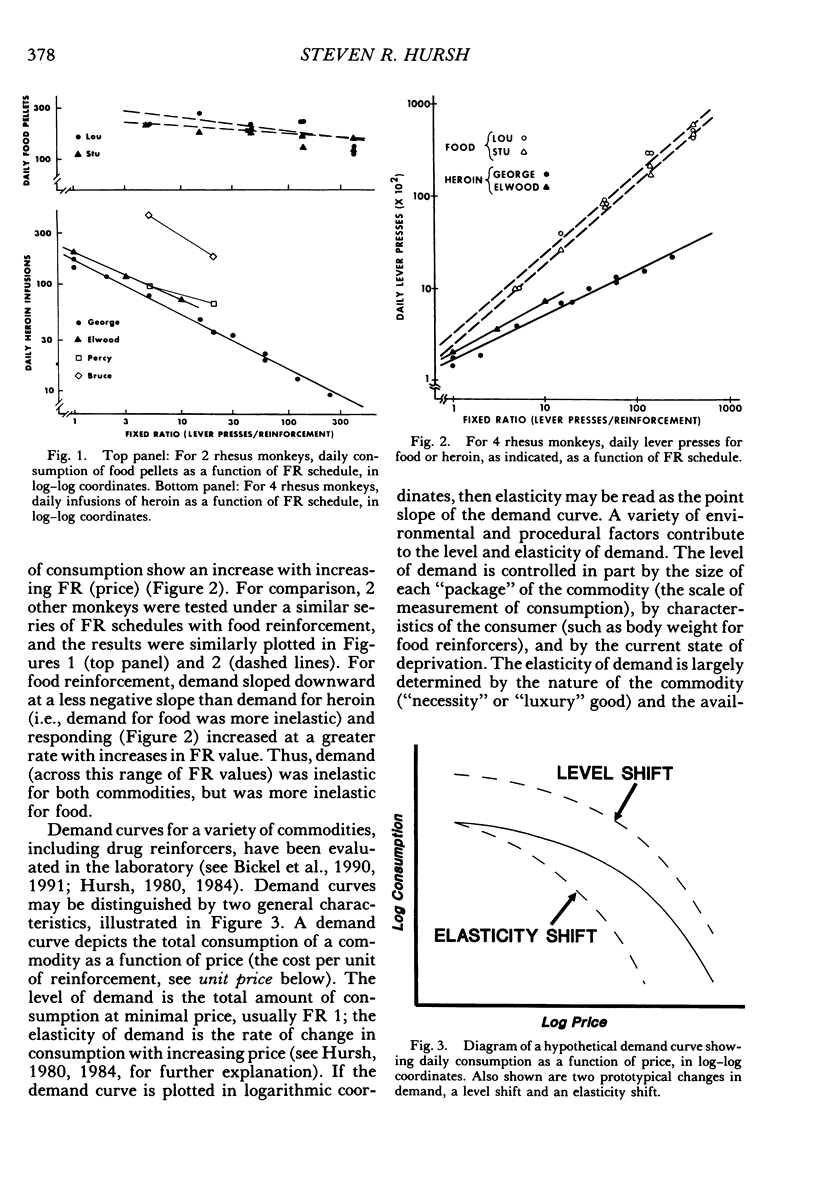

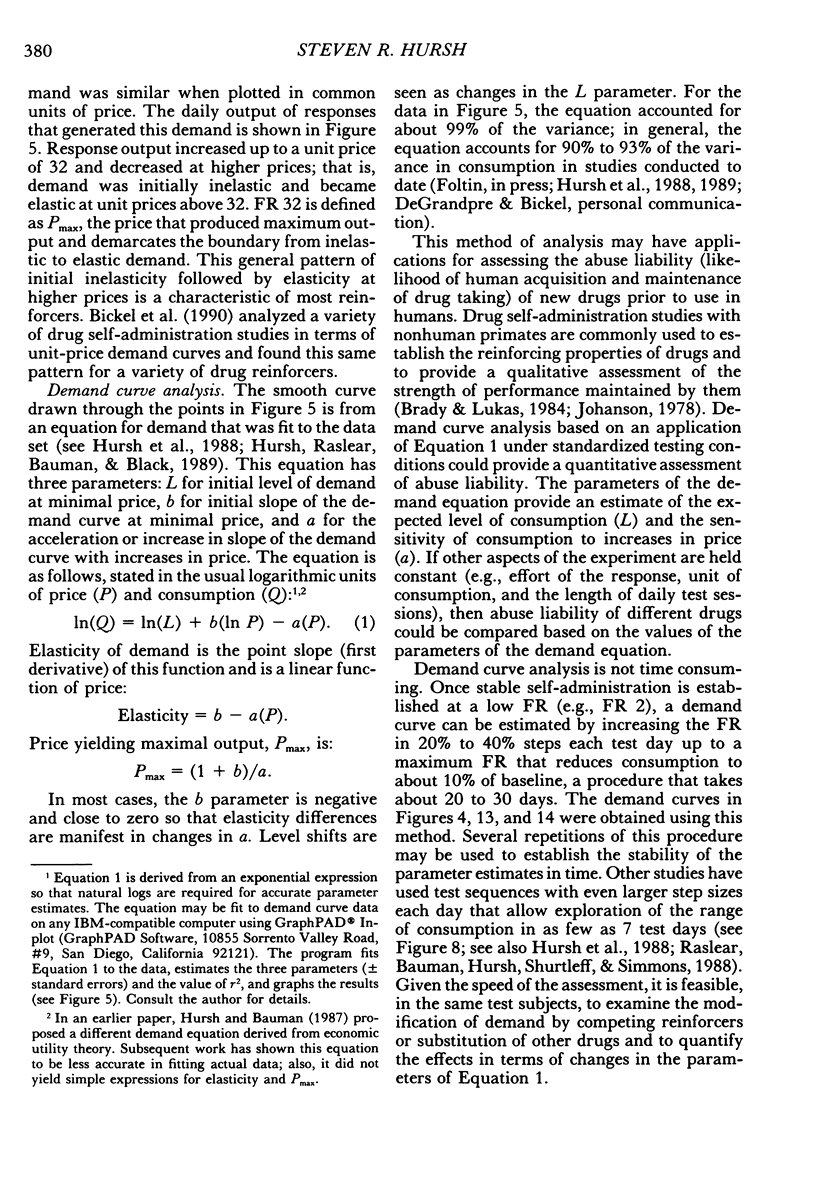
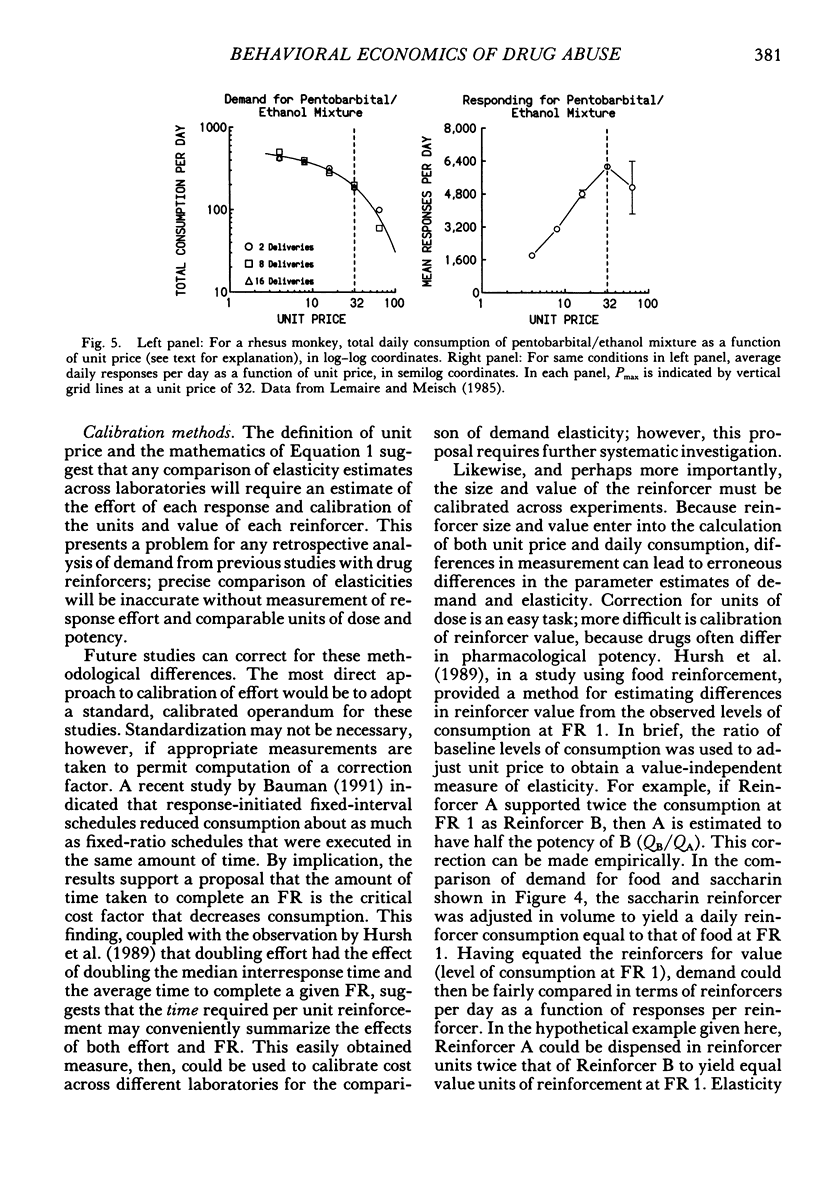
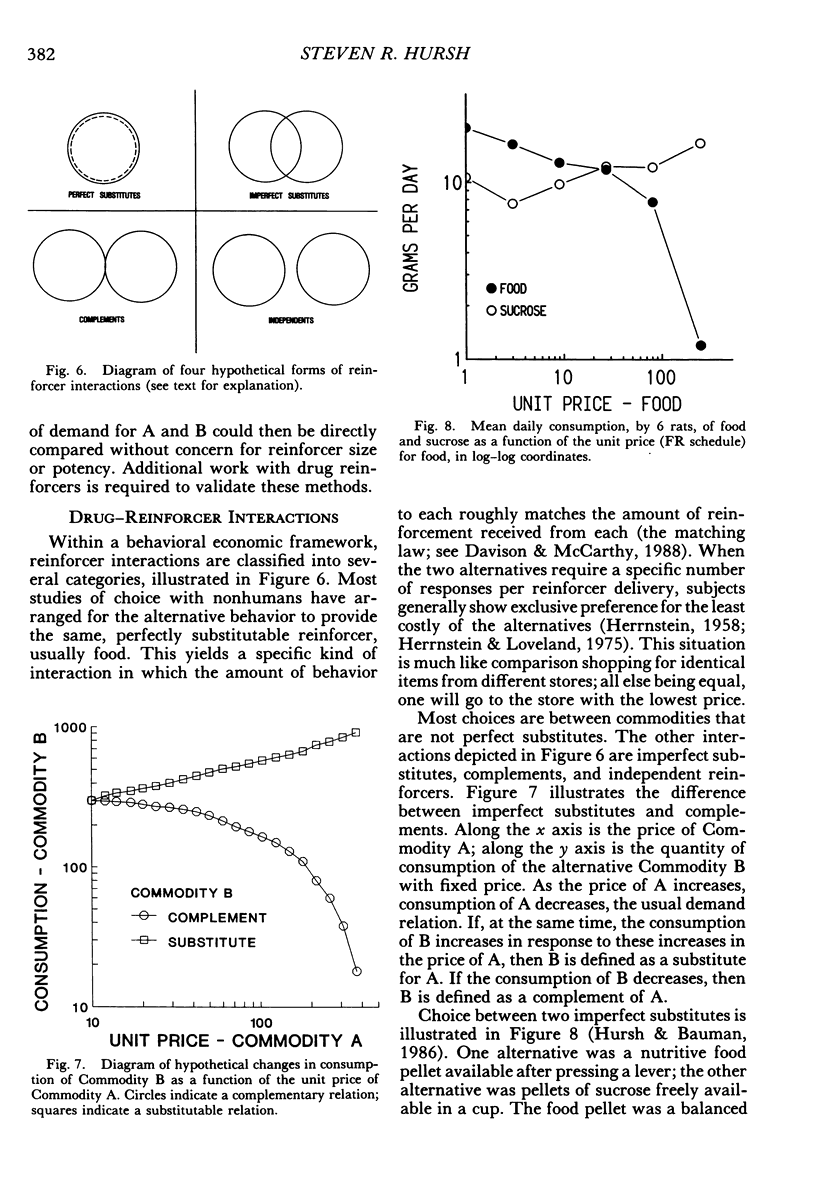

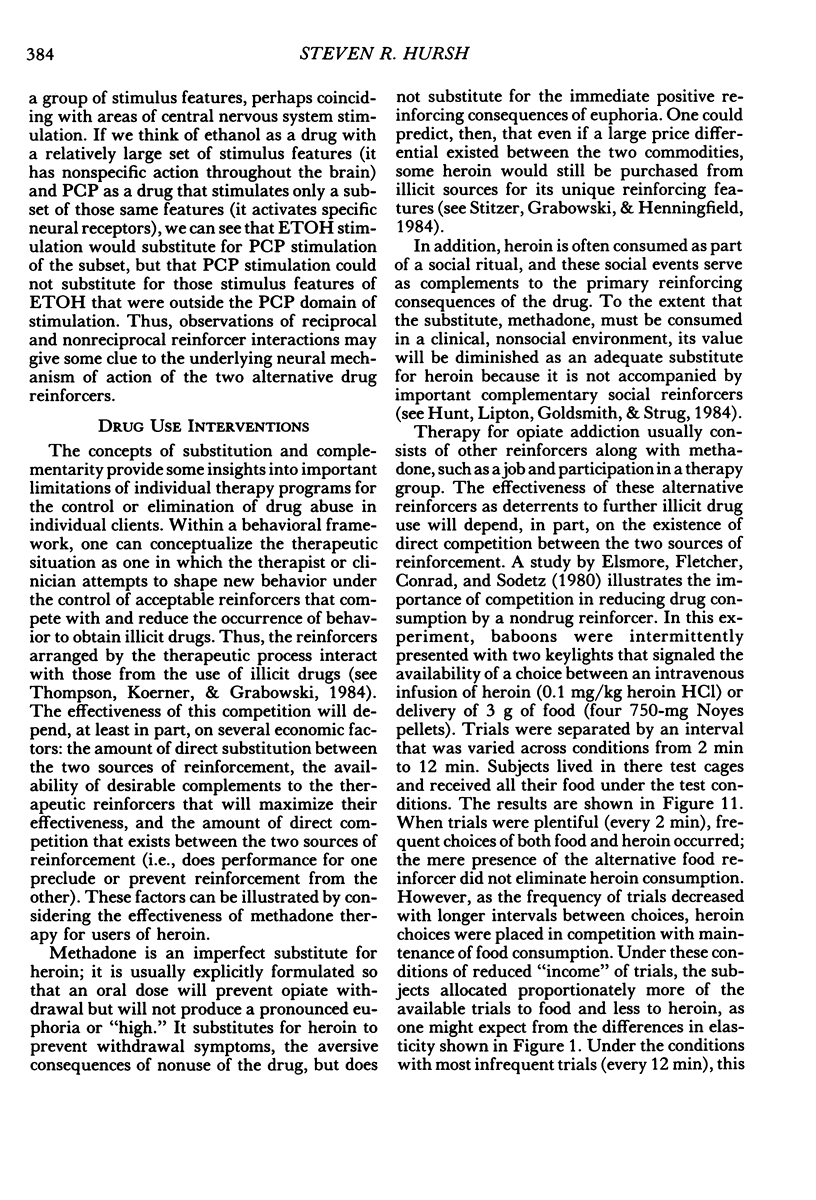
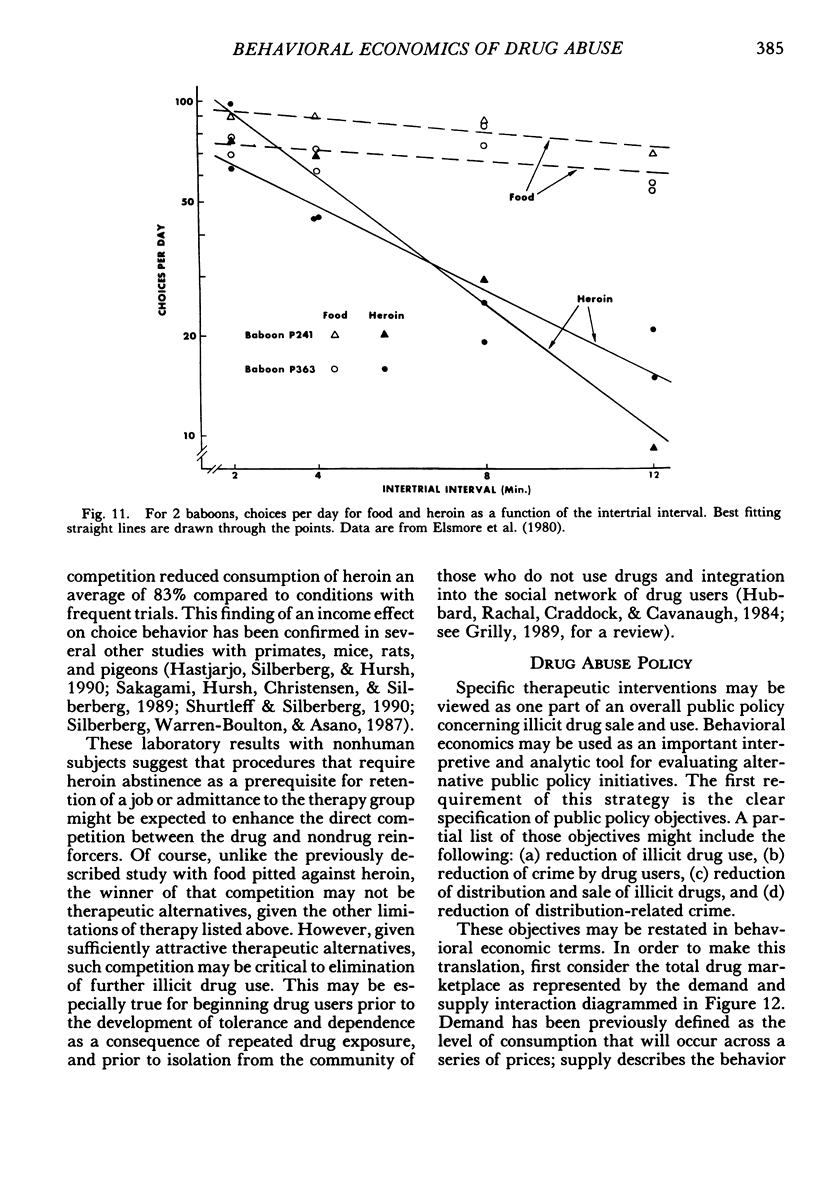
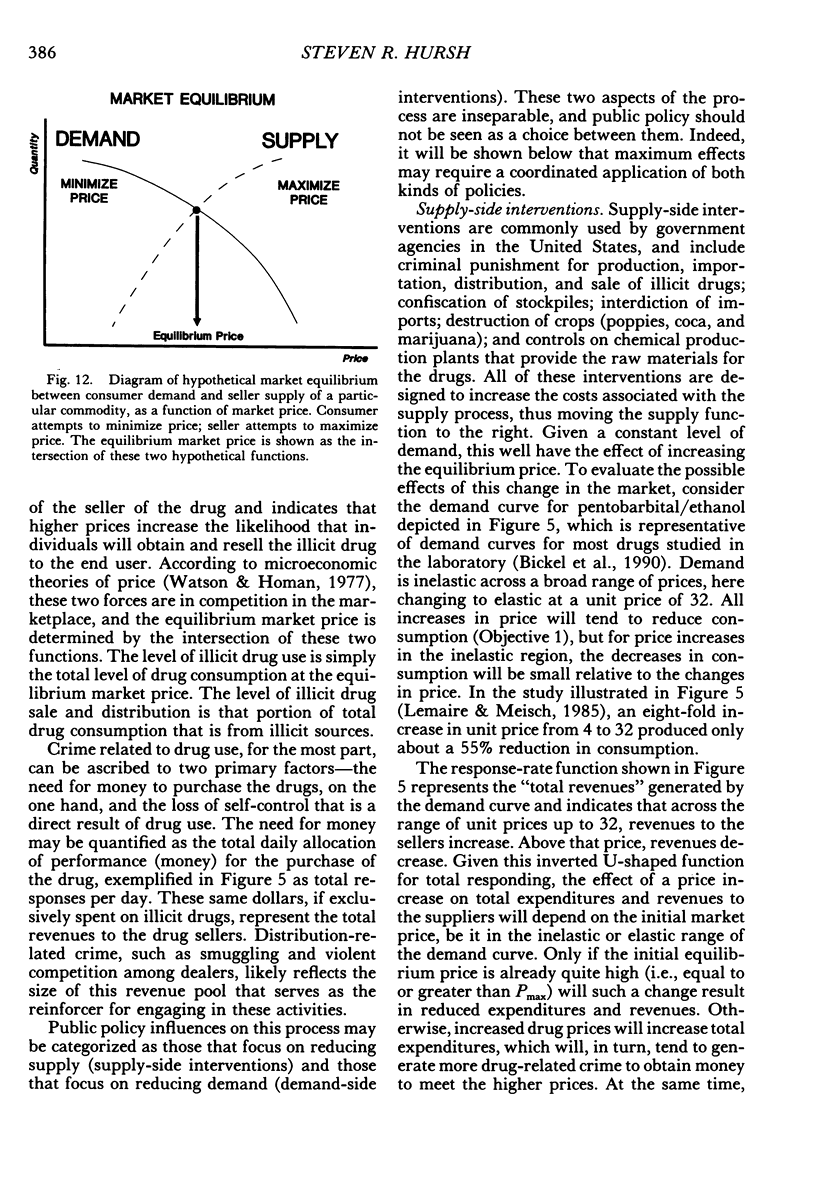
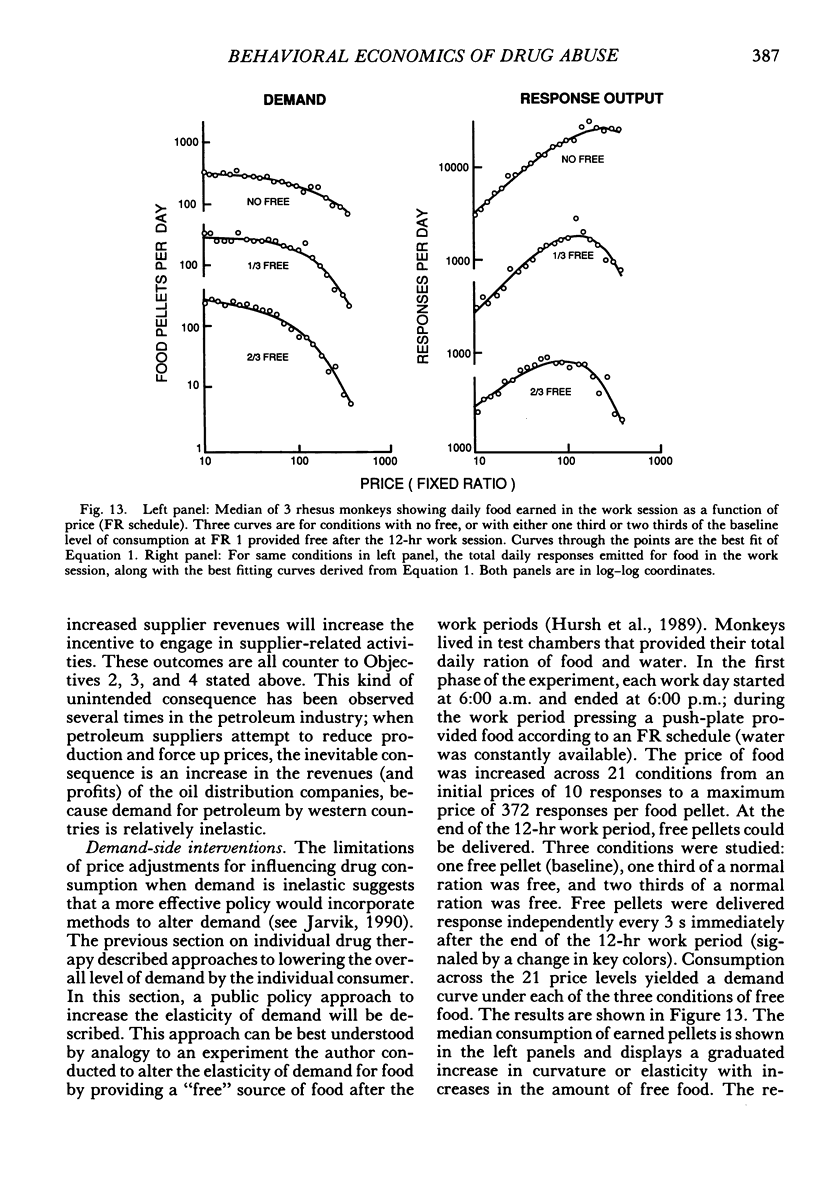
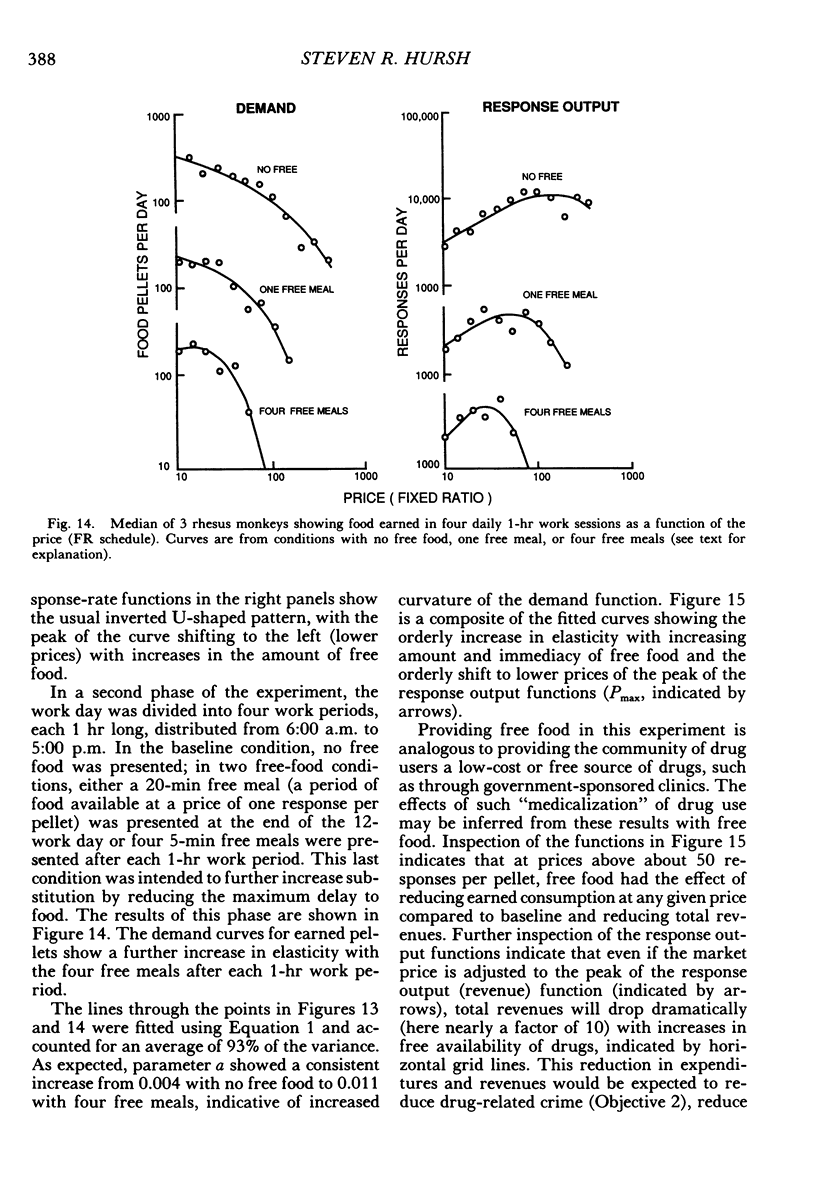
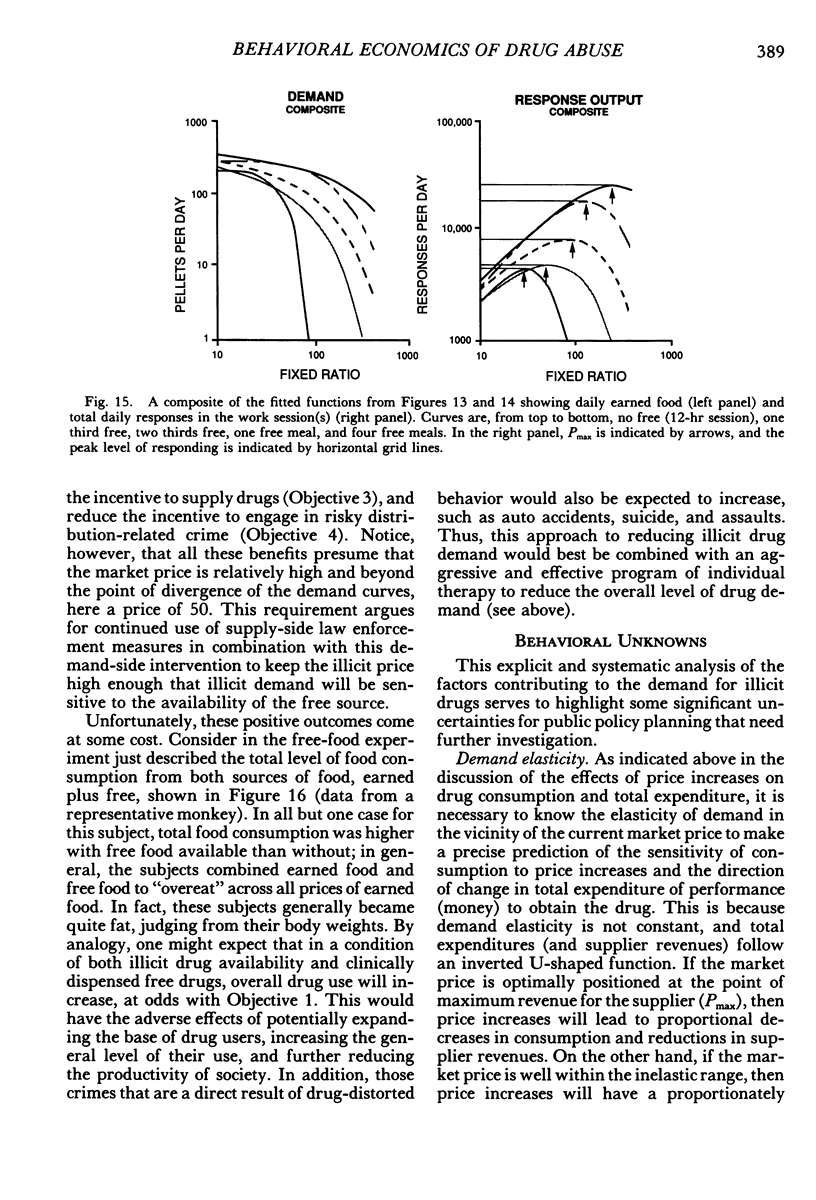
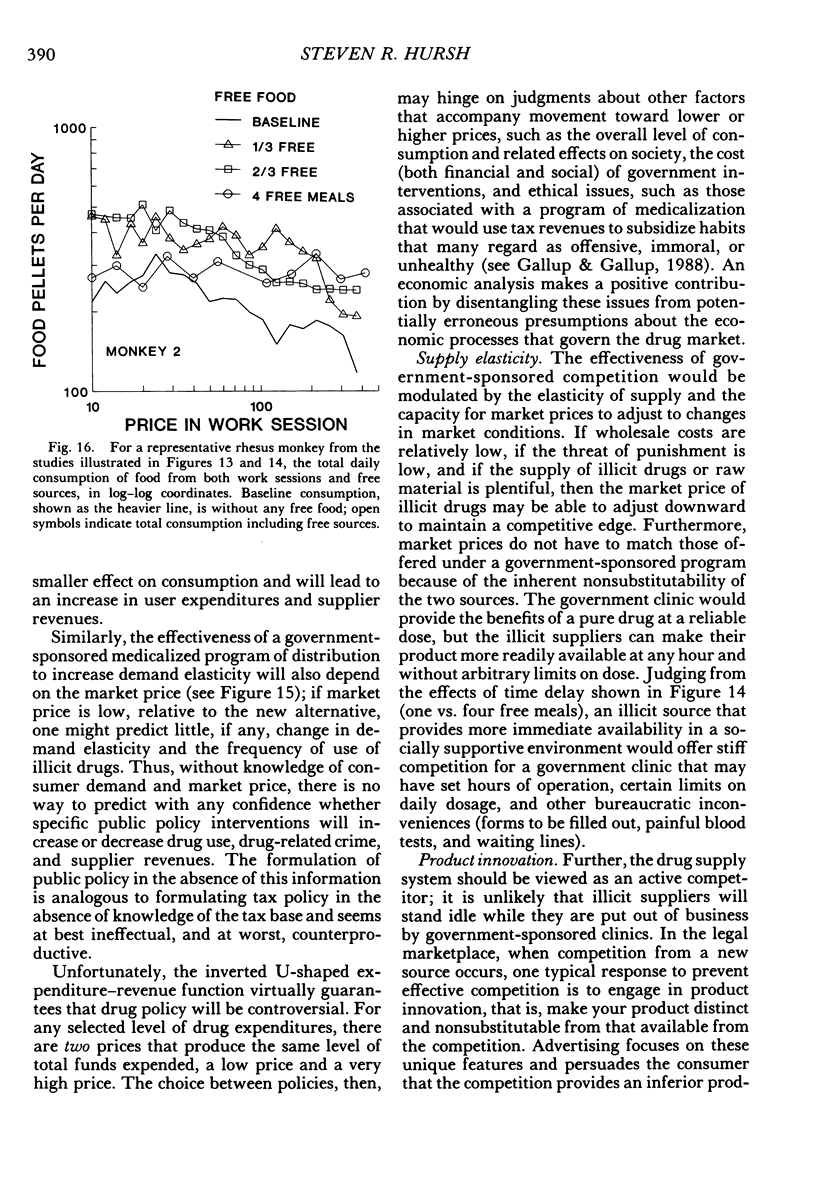

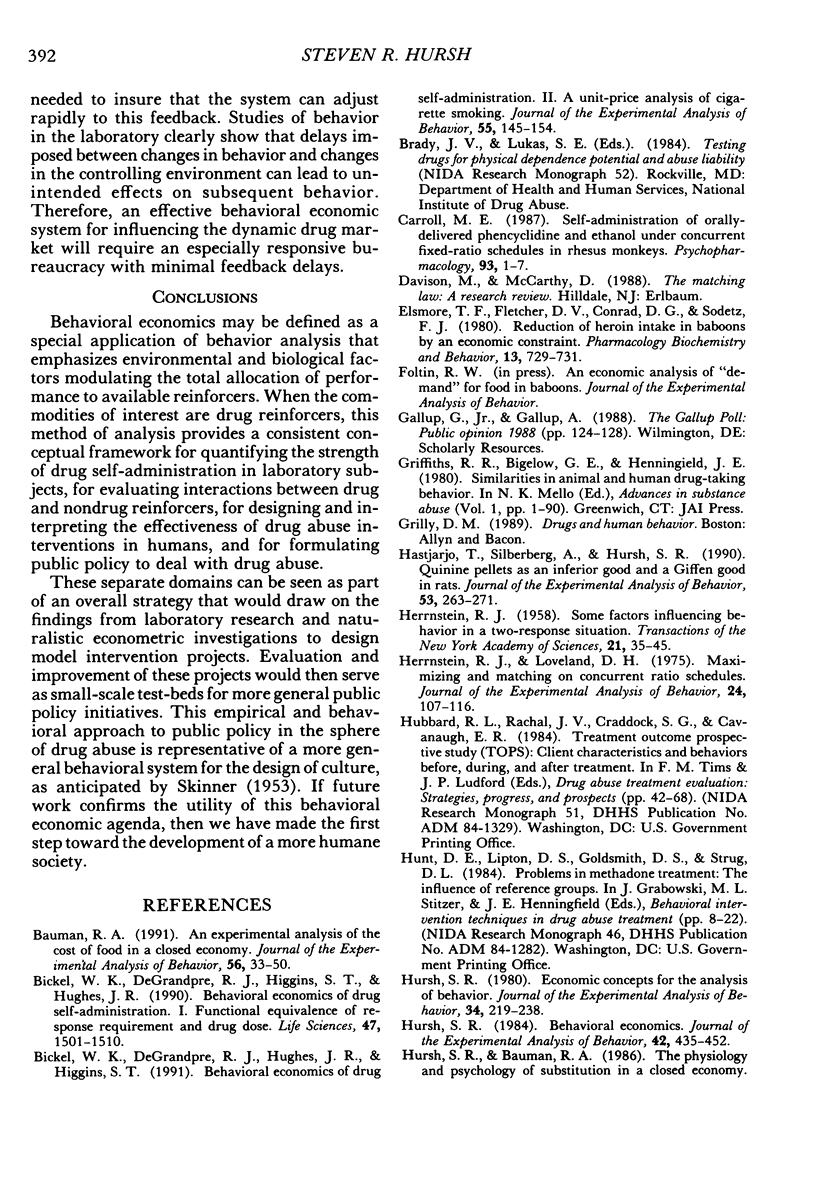
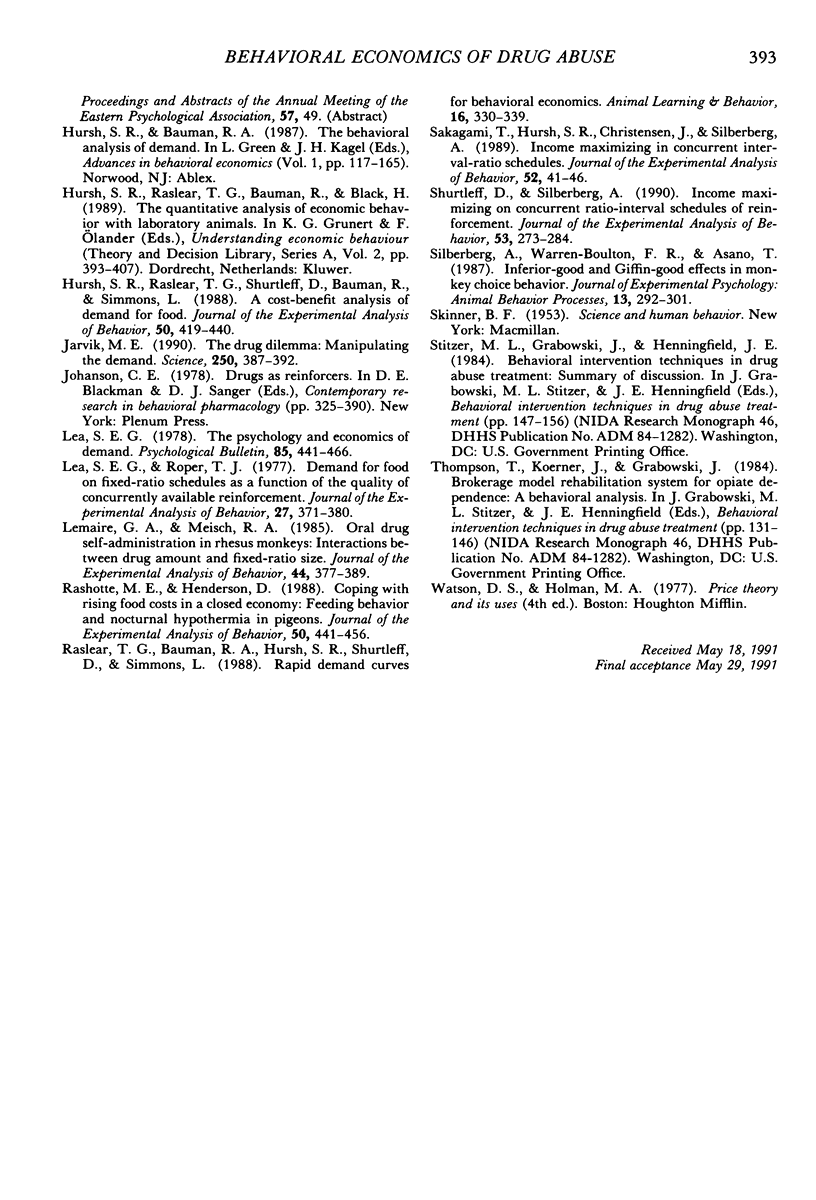
Selected References
These references are in PubMed. This may not be the complete list of references from this article.
- Bauman R. An experimental analysis of the cost of food in a closed economy. J Exp Anal Behav. 1991 Jul;56(1):33–50. doi: 10.1901/jeab.1991.56-33. [DOI] [PMC free article] [PubMed] [Google Scholar]
- Bickel W. K., DeGrandpre R. J., Higgins S. T., Hughes J. R. Behavioral economics of drug self-administration. I. Functional equivalence of response requirement and drug dose. Life Sci. 1990;47(17):1501–1510. doi: 10.1016/0024-3205(90)90178-t. [DOI] [PubMed] [Google Scholar]
- Bickel W. K., DeGrandpre R. J., Hughes J. R., Higgins S. T. Behavioral economics of drug self-administration. II. A unit-price analysis of cigarette smoking. J Exp Anal Behav. 1991 Mar;55(2):145–154. doi: 10.1901/jeab.1991.55-145. [DOI] [PMC free article] [PubMed] [Google Scholar]
- Carroll M. E. Self-administration of orally-delivered phencyclidine and ethanol under concurrent fixed-ratio schedules in rhesus monkeys. Psychopharmacology (Berl) 1987;93(1):1–7. doi: 10.1007/BF02439578. [DOI] [PubMed] [Google Scholar]
- Elsmore T. F., Fletcher G. V., Conrad D. G., Sodetz F. J. Reduction of heroin intake in baboons by an economic constraint. Pharmacol Biochem Behav. 1980 Nov;13(5):729–731. doi: 10.1016/0091-3057(80)90018-0. [DOI] [PubMed] [Google Scholar]
- Hastjarjo T., Silberberg A., Hursh S. R. Quinine pellets as an inferior good and a Giffen good in rats. J Exp Anal Behav. 1990 Mar;53(2):263–271. doi: 10.1901/jeab.1990.53-263. [DOI] [PMC free article] [PubMed] [Google Scholar]
- Herrnstein R. J., Loveland D. H. Maximizing and matching on concurrent ratio schedules. J Exp Anal Behav. 1975 Jul;24(1):107–116. doi: 10.1901/jeab.1975.24-107. [DOI] [PMC free article] [PubMed] [Google Scholar]
- Hunt D. E., Lipton D. S., Goldsmith D. S., Strug D. L. Problems in methadone treatment: the influence of reference groups. NIDA Res Monogr. 1984;46:8–22. [PubMed] [Google Scholar]
- Hursh S. R. Behavioral economics. J Exp Anal Behav. 1984 Nov;42(3):435–452. doi: 10.1901/jeab.1984.42-435. [DOI] [PMC free article] [PubMed] [Google Scholar]
- Hursh S. R. Economic concepts for the analysis of behavior. J Exp Anal Behav. 1980 Sep;34(2):219–238. doi: 10.1901/jeab.1980.34-219. [DOI] [PMC free article] [PubMed] [Google Scholar]
- Hursh S. R., Raslear T. G., Shurtleff D., Bauman R., Simmons L. A cost-benefit analysis of demand for food. J Exp Anal Behav. 1988 Nov;50(3):419–440. doi: 10.1901/jeab.1988.50-419. [DOI] [PMC free article] [PubMed] [Google Scholar]
- Jarvik M. E. The drug dilemma: manipulating the demand. Science. 1990 Oct 19;250(4979):387–392. doi: 10.1126/science.2218544. [DOI] [PubMed] [Google Scholar]
- Lea S. E., Roper T. J. Demand for food on fixed-ratio schedules as a function of the quality of concurrently available reinforcement. J Exp Anal Behav. 1977 Mar;27(2):371–380. doi: 10.1901/jeab.1977.27-371. [DOI] [PMC free article] [PubMed] [Google Scholar]
- Lemaire G. A., Meisch R. A. Oral drug self-administration in rhesus monkeys: interactions between drug amount and fixed-ratio size. J Exp Anal Behav. 1985 Nov;44(3):377–389. doi: 10.1901/jeab.1985.44-377. [DOI] [PMC free article] [PubMed] [Google Scholar]
- Rashotte M. E., Henderson D. Coping with rising food costs in a closed economy: feeding behavior and nocturnal hypothermia in pigeons. J Exp Anal Behav. 1988 Nov;50(3):441–456. doi: 10.1901/jeab.1988.50-441. [DOI] [PMC free article] [PubMed] [Google Scholar]
- Sakagami T., Hursh S. R., Christensen J., Silberberg A. Income maximizing in concurrent interval-ratio schedules. J Exp Anal Behav. 1989 Jul;52(1):41–46. doi: 10.1901/jeab.1989.52-41. [DOI] [PMC free article] [PubMed] [Google Scholar]
- Shurtleff D., Silberberg A. Income maximizing on concurrent ratio-interval schedules of reinforcement. J Exp Anal Behav. 1990 Mar;53(2):273–284. doi: 10.1901/jeab.1990.53-273. [DOI] [PMC free article] [PubMed] [Google Scholar]


